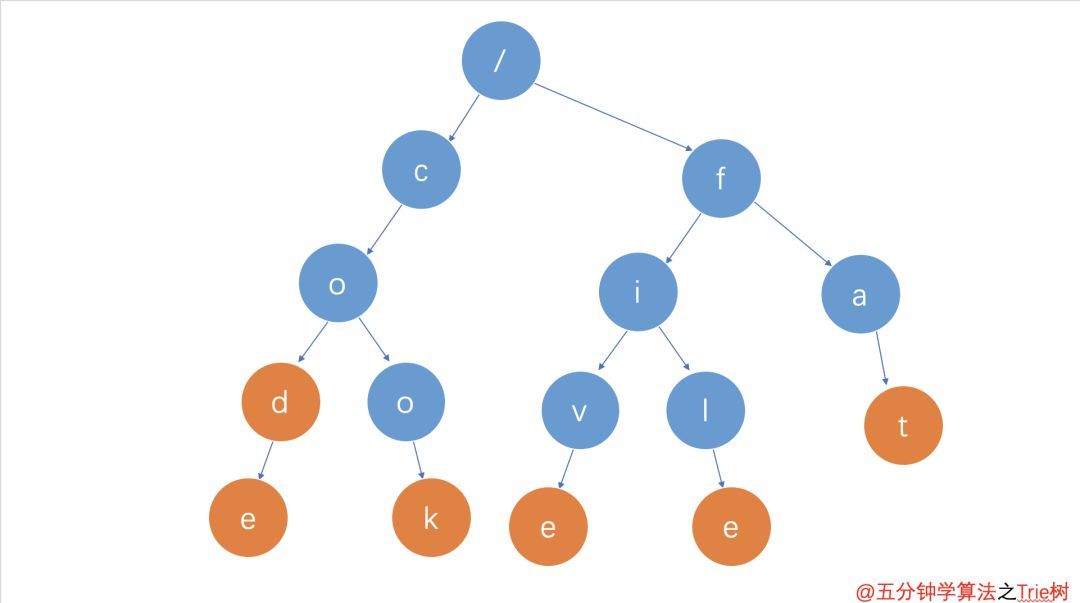英语单词拼写检查
Contact me
- Blog -> https://cugtyt.github.io/blog/index
- Email -> cugtyt@qq.com
- GitHub -> Cugtyt@GitHub
本系列博客主页及相关见此处
主要参考知乎鹅厂面试题,英语单词拼写检查算法?中南葱的回答和How to Write a Spelling Corrector
一个直接想法是,遍历词典,比较和当前词的编辑距离(leetcode 72 编辑距离)。
这个方法当然是可行的,但是问题是时间复杂度很高,需要遍历整个字典。改进的方法是空间换时间,用树结构保持字典,这样可以极大的减小搜索空间。下面是用trie树的方法:

def make_trie(words):
trie = {}
for word in words:
t = trie
for c in word:
if c not in t: t[c] = {}
t = t[c]
t[None] = None
return trie
def check_fuzzy(trie, word, path='', tol=1):
if word == '':
return {path} if None in trie else set()
else:
p0 = set()
if word[0] in trie:
p0 = check_fuzzy(trie[word[0]], word[1:], path+word[0], tol)
p1 = set()
if tol > 0:
for k in trie:
if k is not None and k != word[0]:
p1.update(check_fuzzy(trie[k], word[1:], path+k, tol-1))
return p0 | p1
p0表示准确查找,p1表示相近查找,这里使用了tol参数,用于表示可以容忍几个近似值。
另外为了支持新的容错如增删字母,可以如下修改:
def check_fuzzy(trie, word, path='', tol=1):
if tol < 0:
return set()
elif word == '':
results = set()
if None in trie:
results.add(path)
# 增加词尾字母
for k in trie:
if k is not None:
results |= check_fuzzy(trie[k], '', path+k, tol-1)
return results
else:
results = set()
# 首字母匹配
if word[0] in trie:
results |= check_fuzzy(trie[word[0]], word[1:], path + word[0], tol)
# 分情形继续搜索(相当于保留待探索的回溯分支)
for k in trie:
if k is not None and k != word[0]:
# 用可能正确的字母置换首字母
results |= check_fuzzy(trie[k], word[1:], path+k, tol-1)
# 插入可能正确的字母作为首字母
results |= check_fuzzy(trie[k], word, path+k, tol-1)
# 跳过余词首字母
results |= check_fuzzy(trie, word[1:], path, tol-1)
# 交换原词头两个字母
if len(word) > 1:
results |= check_fuzzy(trie, word[1]+word[0]+word[2:], path, tol-1)
return results
进一步,可以用yield减少不需要的计算,只在有需要的时候继续搜索。
def check_lazy(trie, word, path='', tol=1):
if tol < 0:
pass
elif word == '':
if None in trie:
yield path
# 增加词尾字母
for k in trie:
if k is not None:
yield from check_lazy(trie[k], '', path + k, tol - 1)
else:
if word[0] in trie:
# 首字母匹配成功
yield from check_lazy(trie[word[0]], word[1:], path+word[0], tol)
# 分情形继续搜索(相当于保留待探索的回溯分支)
for k in trie:
if k is not None and k != word[0]:
# 用可能正确的字母置换首字母
yield from check_lazy(trie[k], word[1:], path+k, tol-1)
# 插入可能正确的字母作为首字母
yield from check_lazy(trie[k], word, path+k, tol-1)
# 跳过余词首字母
yield from check_lazy(trie, word[1:], path, tol-1)
# 交换原词头两个字母
if len(word) > 1:
yield from check_lazy(trie, word[1]+word[0]+word[2:], path, tol-1)
用迭代替换递归:
from collections import deque
def check_iter(trie, word, tol=1):
seen = set()
q = deque([(trie, word, '', tol)])
while q:
trie, word, path, tol = q.popleft()
if word == '':
if None in trie:
if path not in seen:
seen.add(path)
yield path
if tol > 0:
for k in trie:
if k is not None:
q.appendleft((trie[k], '', path+k, tol-1))
else:
if word[0] in trie:
q.appendleft((trie[word[0]], word[1:], path+word[0], tol))
if tol > 0:
for k in trie.keys():
if k is not None and k != word[0]:
q.append((trie[k], word[1:], path+k, tol-1))
q.append((trie[k], word, path+k, tol-1))
q.append((trie, word[1:], path, tol-1))
if len(word) > 1:
q.append((trie, word[1]+word[0]+word[2:], path, tol-1))
【可选的一步】纠正的时候往往倾向于认为首字母是无误的,利用这个现象可以减轻不少搜索压力,花费的时间可以少数倍。
def check_head_fixed(trie, word, tol=1):
for p in check_lazy(trie[word[0]], word[1:], tol=tol):
yield word[0] + p
另一个是来自How to Write a Spelling Corrector:
思路是对一次编辑距离的候选词和二次编辑距离的候选词进行搜索
import re
from collections import Counter
def words(text): return re.findall(r'\w+', text.lower())
WORDS = Counter(words(open('big.txt').read()))
def P(word, N=sum(WORDS.values())):
"Probability of `word`."
return WORDS[word] / N
def correction(word):
"Most probable spelling correction for word."
return max(candidates(word), key=P)
def candidates(word):
"Generate possible spelling corrections for word."
return (known([word]) or known(edits1(word)) or known(edits2(word)) or [word])
def known(words):
"The subset of `words` that appear in the dictionary of WORDS."
return set(w for w in words if w in WORDS)
def edits1(word):
"All edits that are one edit away from `word`."
letters = 'abcdefghijklmnopqrstuvwxyz'
splits = [(word[:i], word[i:]) for i in range(len(word) + 1)]
deletes = [L + R[1:] for L, R in splits if R]
transposes = [L + R[1] + R[0] + R[2:] for L, R in splits if len(R)>1]
replaces = [L + c + R[1:] for L, R in splits if R for c in letters]
inserts = [L + c + R for L, R in splits for c in letters]
return set(deletes + transposes + replaces + inserts)
def edits2(word):
"All edits that are two edits away from `word`."
return (e2 for e1 in edits1(word) for e2 in edits1(e1))
使用方法:
>>> correction('speling')
'spelling'
>>> correction('korrectud')
'corrected'